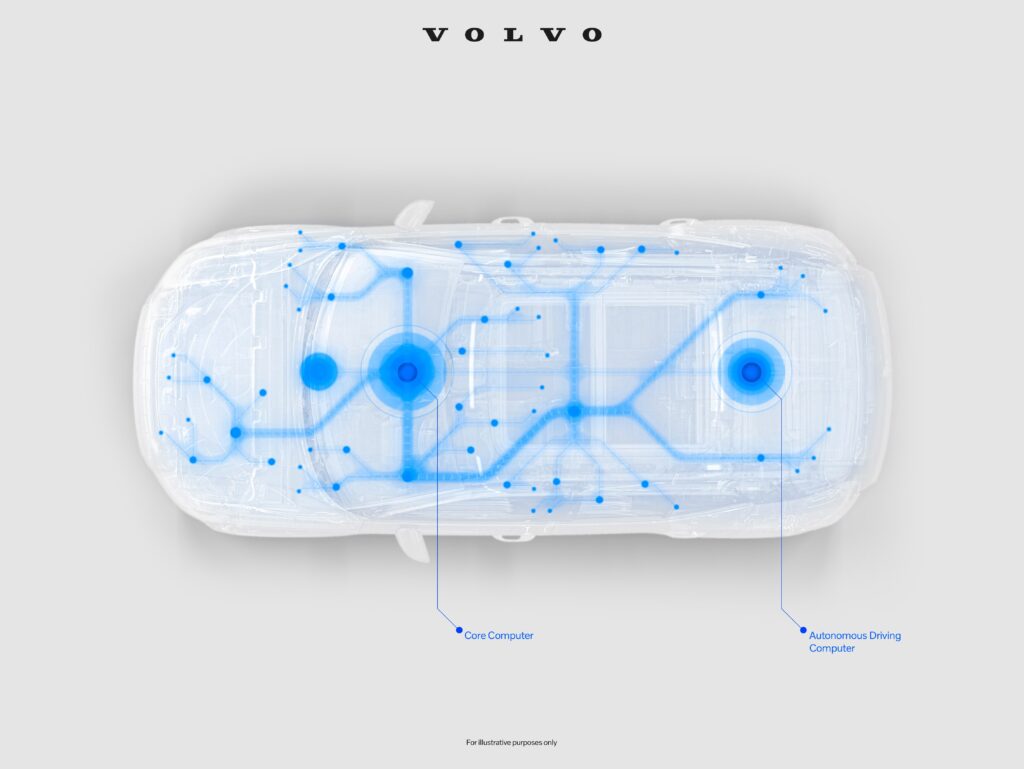Volvo Cars has opted to use Nvidia’s DRIVE Orin AI-computing platform to power the autonomous driving capabilities of its next-generation models featuring the auto maker’s forthcoming SPA2 modular vehicle architecture. NVIDIA DRIVE Orin system-on-a-chip (SoC) technology is capable of an unprecedented 254 tera (or 254 trillion) operations per second (TOPS). The first car featuring Orin will be the next-generation Volvo XC90, due to be revealed next year.
“We believe in partnering with the world’s leading technology firms to build the best Volvos possible,” said Henrik Green, CTO at Volvo Cars. “With the help of Nvidia DRIVE Orin technology, we can take safety to the next level on our next generation of cars.”
The Nvidia DRIVE Orin-powered computer will play a key role in delivering safe and continuously updated autonomous driving. It will work together with software developed in-house and by Zenseact, Volvo Cars’ autonomous driving software development company, as well as backup systems for steering and braking.
The added computing power and graphics processing delivered by the SoC technology enable advanced sensor suites needed for autonomous driving, such as the state-of-the-art lidar technology developed by Luminar, another of Volvo Cars’ technology partners.
Volvo Cars’ SPA2 architecture will be available as hardware-ready for autonomous drive from production start. Its unsupervised autonomous driving feature, called Highway Pilot, will be activated when it is verified to be safe for individual geographic locations and conditions.
The decision represents the next step in the deepening collaboration between Volvo Cars and Nvidia. In 2018, Volvo Cars announced it will also use Nvidia DRIVE Xavier SoC technology for the core computer on cars based on SPA2.
The Nvidia DRIVE Xavier-powered core computer will manage core functionalities inside the car such as base software, energy management and driver assistance. It works together with the Nvidia DRIVE Orin-powered autonomous driving computer, which is dedicated to computing-intense work such as vision and lidar processing, and delivering the high safety integrity level required for autonomous driving.
Volvo Cars is centralizing computing in its next-generation cars to enable them to be safer, more personal and more sustainable, as well as to enable the company to make its cars better every day.
Moving to a centralized computing architecture means removing a lot of complexity, according to the car manufacturer. Rather than relying on multiple electronic control units around the car that control individual features and systems, much of the software is now developed in-house and kept in a central computer in the car. This enables more frequent improvements and growth in features via over-the-air updates.



